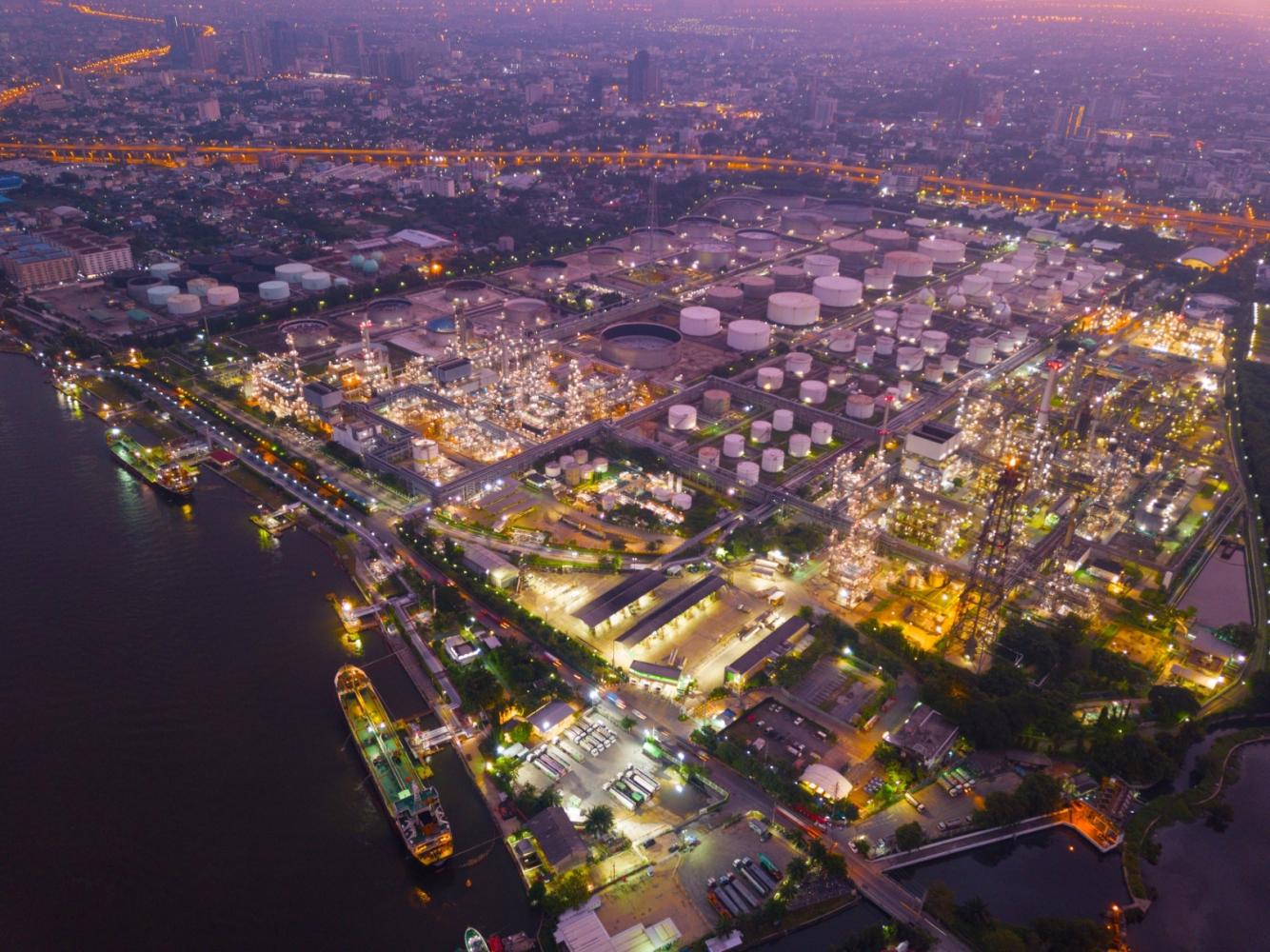Low-carbon economy looms – bangkokpost.com

Report on Thailand’s Accelerated Net-Zero Target and Alignment with Sustainable Development Goals
1.0 Introduction and Policy Shift
The government of Thailand has announced a significant acceleration of its climate action timeline, advancing the national net-zero greenhouse gas emissions target from 2065 to 2050. This report analyzes the policy shift, its implications for carbon-intensive industries, and its alignment with the United Nations Sustainable Development Goals (SDGs), particularly SDG 13 (Climate Action), SDG 7 (Affordable and Clean Energy), SDG 9 (Industry, Innovation, and Infrastructure), and SDG 12 (Responsible Consumption and Production).
2.0 National Strategy for Climate Action and Sustainable Growth
2.1 Updated Nationally Determined Contribution (NDC)
In a major policy realignment, the new administration has committed to achieving net-zero emissions by 2050, a 15-year acceleration from the previous pledge made at COP26 in 2021. This commitment was formalized with the cabinet’s approval of the updated Nationally Determined Contribution (NDC 3.0). The revised timeline is designed to enhance Thailand’s global competitiveness, attract an estimated 230 billion baht in foreign investment for green initiatives, and ensure the nation’s industrial framework aligns with international climate standards, directly supporting SDG 13 (Climate Action).
2.2 Targeted Sectors and Mechanisms
Implementation of the new policy will focus on five key sectors, including energy and transport. This strategy is central to achieving SDG 7 (Affordable and Clean Energy) and SDG 11 (Sustainable Cities and Communities). The government plans to introduce new regulatory mechanisms to support this transition, including:
- Carbon taxation
- A carbon credit trading system
- Stricter emissions standards
3.0 Industrial and Economic Implications
3.1 Enhancing Economic Competitiveness and Innovation (SDG 8 & SDG 9)
Research from SCB EIC indicates that the accelerated 2050 target is essential for Thailand to maintain its position within global trade networks. Failure to align with the 2050 timeline, adopted by 111 other countries, would risk exclusion from supply chains that prioritize partners with equivalent climate commitments. This transition presents a significant challenge but also an urgent opportunity for Thai businesses to innovate and transform, fostering sustainable economic growth (SDG 8) and resilient infrastructure (SDG 9).
3.2 Sectoral Impacts: Opportunities and Challenges
The accelerated timeline is expected to create a dual-speed economy, impacting sectors differently.
Sectors Poised for Growth
Industries aligned with sustainable development will benefit from the transition. These sectors are key to advancing SDG 7, SDG 9, and SDG 12.
- Renewable and clean energy supply chains
- Energy efficiency and management sectors
- Electric vehicle (EV) and related industries
- Sustainable waste management industries
- Bio-based and low-carbon material industries
- Carbon capture and storage technology
Sectors Facing Pressure
Carbon-intensive industries, which account for 24.2% of national emissions, face significant pressure to decarbonize. These sectors must adapt their production models to align with SDG 12 (Responsible Consumption and Production).
- Oil and gas
- Fossil fuel power generation
- Steel, cement, and chemical production
- Internal combustion engine vehicle manufacturing
4.0 Framework for Corporate Transition and Responsible Production (SDG 12)
4.1 Recommended Actions for Businesses
To facilitate the transition towards responsible production patterns, SCB EIC recommends a five-step process for all businesses:
- Measure current greenhouse gas emissions.
- Set emission reduction targets in line with global standards.
- Select viable and cost-effective reduction technologies and strategies.
- Implement emission reduction measures across operations.
- Monitor and transparently report progress.
4.2 Navigating Global Regulations
The global regulatory landscape, including the European Union’s Carbon Border Adjustment Mechanism (CBAM) set for 2026, intensifies the need for action. According to Kasikorn Research Center, Thai exporters in the steel, cement, and aluminium sectors must green their operations to mitigate CBAM-related costs. Recommended strategies include collecting carbon data, implementing quick-win projects like solar panel installation, and accessing green finance.
5.0 Policy Support and Partnerships for the Goals (SDG 17)
5.1 Proposed Government Interventions
Achieving the 2050 target requires strong policy support and partnerships between the public and private sectors, embodying the principles of SDG 17. SCB EIC proposes two key areas for government intervention:
- Incentive Mechanisms: Implement policies such as raising renewable energy targets, reducing fossil fuel procurement, and offering tax credits for clean energy adoption to drive progress on SDG 7.
- Support for Vulnerable Groups: Provide knowledge-sharing programs, low-interest green loans for SMEs, and subsidies for low-income households to ensure an inclusive and just transition, supporting SDG 8.
Access to green finance, including loans and bonds, is identified as a critical enabler for industries to invest in deep decarbonization technologies and sustainable innovation (SDG 9).
6.0 Conclusion
Thailand’s decision to accelerate its net-zero target to 2050 is a definitive strategy for ensuring long-term economic survival and demonstrating a firm commitment to global climate action (SDG 13). The success of this ambitious transition hinges on the rapid adaptation of the industrial sector, robust government support, and effective collaboration among all stakeholders, reflecting a comprehensive approach to achieving the Sustainable Development Goals.
Analysis of Sustainable Development Goals in the Article
1. Which SDGs are addressed or connected to the issues highlighted in the article?
-
SDG 13: Climate Action
- The entire article is centered on Thailand’s accelerated plan to achieve net-zero greenhouse gas emissions by 2050. This directly addresses the core objective of SDG 13, which is to take urgent action to combat climate change and its impacts. The policy shift, the updated Nationally Determined Contribution (NDC 3.0), and the focus on emission reduction are all key components of this goal.
-
SDG 7: Affordable and Clean Energy
- The article explicitly mentions that industries poised to benefit from the transition include “renewable and clean energy supply chain industries.” It also notes that government intervention should include “raising renewable energy targets, cutting fossil fuel procurement and offering tax credits for clean energy use,” which directly relates to increasing the share of clean energy.
-
SDG 9: Industry, Innovation, and Infrastructure
- A major focus of the article is the pressure on Thailand’s industrial sector, which is responsible for 24.2% of national emissions. The text discusses the need for carbon-intensive sectors (steel, cement, chemicals) to invest in “deep decarbonisation technologies” and for businesses to “green their operations.” This aligns with the goal of building resilient infrastructure and fostering sustainable industrialization.
-
SDG 8: Decent Work and Economic Growth
- The article frames the green transition as a strategy for “economic competitiveness” and “long-term survival.” It highlights the creation of new opportunities in the “emerging low-carbon economy,” such as in electric vehicles (EVs) and bio-based materials. It also addresses the need to support vulnerable groups, including “low-interest green loans for small and medium-sized enterprises,” to ensure an inclusive economic transition.
-
SDG 12: Responsible Consumption and Production
- The article discusses the need for industries to adopt more sustainable practices. It mentions “improved waste management” as a quick-win project and the development of “sustainable products and services, including low-carbon agricultural goods and eco-friendly hotels.” This connects to the goal of ensuring sustainable consumption and production patterns.
-
SDG 17: Partnerships for the Goals
- The policy realignment is partly driven by the need to “keep pace with global partners” and align with international standards like the EU’s Carbon Border Adjustment Mechanism (CBAM). The article also mentions the goal of attracting “230 billion baht in foreign investment for green initiatives” and emphasizes that success requires “stronger cooperation from all stakeholders,” including government, the private sector, and international partners.
2. What specific targets under those SDGs can be identified based on the article’s content?
-
Target 13.2: Integrate climate change measures into national policies, strategies and planning.
- The article is fundamentally about Thailand’s new national policy to accelerate its net-zero goal to 2050. The approval of the “updated Nationally Determined Contribution (NDC 3.0)” and the implementation plan targeting five sectors with mechanisms like “carbon taxation and a carbon credit trading system” are direct examples of integrating climate measures into national planning.
-
Target 7.2: By 2030, increase substantially the share of renewable energy in the global energy mix.
- This target is directly implied by the recommendation for government intervention to include “raising renewable energy targets” and promoting “renewable and clean energy supply chain industries.”
-
Target 9.4: By 2030, upgrade infrastructure and retrofit industries to make them sustainable…
- The article’s call for carbon-intensive industries like cement and steel to “invest in deep decarbonisation technologies” and for companies to “green their operations” by installing solar panels directly supports this target of making industries more sustainable and environmentally sound.
-
Target 8.2: Achieve higher levels of economic productivity through diversification, technological upgrading and innovation…
- The article points to the creation of a “dual-speed economy” where “low-carbon innovators” are rewarded. It encourages businesses to “seize opportunities in emerging low-carbon industries — such as clean energy, EVs and bio-based materials,” which aligns with achieving productivity through technological upgrading and innovation in green sectors.
-
Target 17.3: Mobilize additional financial resources for developing countries from multiple sources.
- This target is clearly identified by the government’s aim to “attract an estimated 230 billion baht in foreign investment for green initiatives.” The article also mentions the need for businesses to access “green loans and green bonds to reduce capital costs,” which represents the mobilization of financial resources for sustainable development.
3. Are there any indicators mentioned or implied in the article that can be used to measure progress towards the identified targets?
-
Total greenhouse gas emissions (Indicator 13.2.2)
- The primary indicator is the national goal of reaching “net-zero greenhouse gas emissions by 2050.” The article also provides a baseline figure for a key sector, stating that “Thailand’s industrial sector, responsible for 24.2% of national emissions or roughly 59 million tonnes of carbon,” which can be used to track reduction progress.
-
Foreign direct investment and other financial flows (Indicator 17.3.1)
- A specific quantifiable indicator is mentioned: the plan to attract “an estimated 230 billion baht in foreign investment for green initiatives.” Tracking this inflow of capital would measure progress towards financing the green transition.
-
Adoption of national policies and institutional frameworks
- The implementation and enforcement of policies mentioned in the article serve as key indicators. These include the “carbon taxation” system, the “carbon credit trading system,” and stricter “emission standards.” The effectiveness of these policies would be a measure of progress.
-
Share of renewable energy (Indicator 7.2.1)
- While a specific percentage is not given, the government’s proposed action to “raise renewable energy targets” implies that the share of renewable energy in the national energy mix is a critical indicator for measuring the success of the transition.
-
Private sector engagement and investment
- The article implies several indicators of private sector progress, such as the number of “Thai corporations [that] have already set their own net-zero 2050 targets,” the amount of capital raised through “green loans and green bonds,” and the rate of investment in “deep decarbonisation technologies” and “solar panel installation.”
4. Table of SDGs, Targets, and Indicators
| SDGs | Targets | Indicators |
|---|---|---|
| SDG 13: Climate Action | Target 13.2: Integrate climate change measures into national policies, strategies and planning. |
|
| SDG 7: Affordable and Clean Energy | Target 7.2: Increase substantially the share of renewable energy. |
|
| SDG 9: Industry, Innovation, and Infrastructure | Target 9.4: Upgrade infrastructure and retrofit industries to make them sustainable. |
|
| SDG 8: Decent Work and Economic Growth | Target 8.2: Achieve higher levels of economic productivity through technological upgrading and innovation. |
|
| SDG 12: Responsible Consumption and Production | Target 12.5: Substantially reduce waste generation. |
|
| SDG 17: Partnerships for the Goals | Target 17.3: Mobilize additional financial resources for developing countries. |
|
Source: bangkokpost.com
What is Your Reaction?
 Like
0
Like
0
 Dislike
0
Dislike
0
 Love
0
Love
0
 Funny
0
Funny
0
 Angry
0
Angry
0
 Sad
0
Sad
0
 Wow
0
Wow
0
















































:focal(1500,1000)/https://media.globalcitizen.org/a6/9a/a69a4720-d8a1-4715-b596-18738d03c05c/rotary_polio_hero_image.jpg?#)







/countries/sri-lanka/photo-credit---dmc-sri-lanka.tmb-1200v.jpg?sfvrsn=dc298bcc_1#)


















